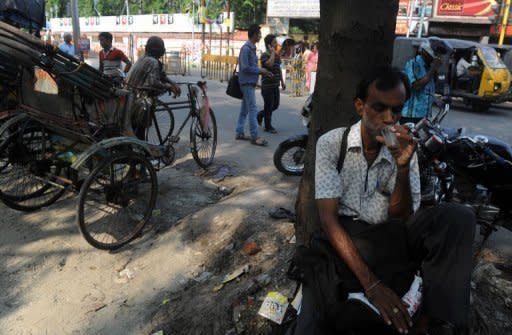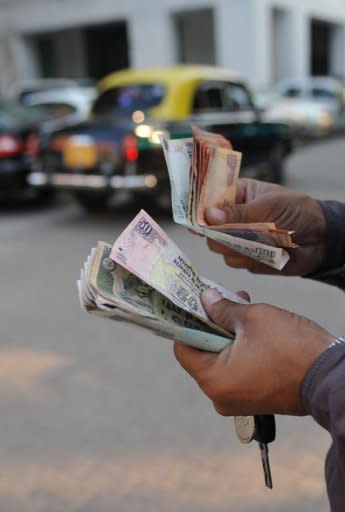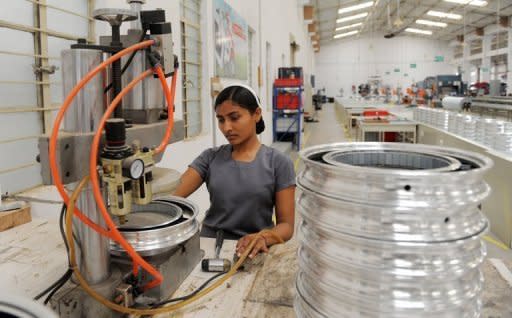India jolted by weak growth data
India's economy grew just 5.3 percent in January-March, its slowest pace in almost a decade, data showed Thursday, as a global slowdown, high interest rates and political deadlock take their toll. The figure, which sharply undershot analysts' projections of 6.1 percent, pushed India's currency to a record low and piles pressure on the embattled government of Prime Minister Manmahan Singh. "The economy is in the throes of a serious slowdown," said Chandrajit Banerjee, director general of the Confederation of Indian Industry, calling for rate cuts and other "bold" actions "exclusively aimed at salvaging the economy." The figure for the final three months of the fiscal year was the slowest since 2002-2003 and added to the gloom already surrounding Asia's third-largest economy, where a string of corruption scandals and a lack of economic reforms have hit business sentiment. The grim data also came on a day the country was hit by a sweeping nationwide strike over rising petrol prices that shut offices and disrupted public transport in many cities. "Confidence and demand have been weighed down by higher interest rates, a challenging export environment, and, perhaps most important, policy mismanagement," Glenn Levine, senior economist at Moody's Analytics. The figures from the national statistics office showed the economy expanded 6.5 percent for year to March 2012, far below the 8.4 percent logged the previous year and the lowest since the economy expanded by just four percent in 2002-03. Singh admitted last week his scandal-tainted Congress-led coalition must "do better" to get the once red-hot economy back to the growth rates of nine percent seen in the past decade. But administration, which has ballooning fiscal and current account deficits, has little room to increase spending to spur growth while interest rates cannot be cut significantly because of high inflation of around 7.0 percent. Cutting rates would also put further downward pressure on the rupee, which on Thursday sank to 56.50 against the dollar, its lowest ever. "With growth slowing, inflation sticky and interest rates still high, it is a difficult situation for the central bank -- whether to be pro-growth or battle inflation," said Naveen Mathur, an associate director at Angel Broking. "And besides this there are serious global concerns." The final quarter of the last financial year saw a contraction in the key manufacturing sector, with output shrinking 0.3 percent, compared with 7.3 percent expansion in the same quarter last year. Farm, construction and mining production grew only modestly. Shares on the Mumbai stock market fell as much as 1.38 percent after the figures were released. "We are going through a rough patch worldwide. Growth figures have taken a hit because of that," Rajesh Chakrabarti, professor of finance at the Indian School of Business, told India's NDTV network. While more than six percent full-year growth would be the envy of much of the world, at least nine to 10 percent expansion is needed to reduce India's widespread poverty, experts say. The sluggish results will add to concerns about the global outlook as China has also recently released a slew of bleak data, fuelling fears the world's second biggest economy is cooling faster than expected. Hopes the two emerging market giants, who weathered the 2008 financial crisis well, could underpin another global recovery have been steadily dashed by their stuttering performances. Singh is credited with opening up the economy when he was the finance minister in 1991 but his premiership has been undermined by a series of policy U-turns and corruption scandals. His once ambitious reform agenda has stalled amid coalition infighting, and the economic climate has been further strained by the announcement of new tax measures seen as hostile to foreign investment.





